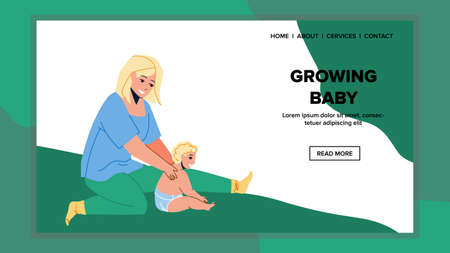Understanding the Importance of Car Seat Cleanliness
Keeping your child’s car seat clean isn’t just about appearances—it’s a critical aspect of ensuring their safety, health, and the durability of your investment. According to American Academy of Pediatrics (AAP) guidelines, maintaining car seats in pristine condition helps prevent the buildup of harmful germs, allergens, and bacteria that can compromise your child’s well-being. Spilled snacks, drinks, and everyday dirt can quickly turn a car seat into a breeding ground for mold and bacteria, which may trigger allergies or illnesses. Additionally, grime and sticky residues can damage harnesses and buckles, reducing the effectiveness of safety features over time. By following American health standards and regularly cleaning your child’s car seat, you not only protect their health but also extend the life of this essential piece of safety equipment. This proactive approach ensures every ride is as safe—and hygienic—as possible for your little one.
Choosing the Right Products and Supplies
When it comes to cleaning and maintaining your child’s car seat, selecting the right products is essential for both safety and hygiene. In the U.S., there are a variety of cleaning solutions available, but not all are suitable for use around children. Prioritizing non-toxic, fragrance-free, and gentle formulas will help ensure your child’s health while keeping their car seat fresh and clean.
Safe Cleaning Products for Car Seats
Many parents wonder which cleaning supplies are both effective and safe for little ones. Below is a helpful table summarizing common cleaning materials you can find in American stores, along with notes on their safety and recommended uses:
| Product Type | Common Brands | Safe for Kids? | Best For |
|---|---|---|---|
| Mild Liquid Detergent (Fragrance-Free) | Dreft, Seventh Generation, Babyganics | Yes | Washing fabric covers, straps (spot clean only), small stains |
| Baking Soda Solution | Arm & Hammer, Store Brand | Yes | Deodorizing, spot treatment for odors or mild stains |
| White Vinegar Diluted With Water | Heinz, Store Brand | Yes (in small amounts) | Disinfecting hard surfaces (avoid direct contact with harness webbing) |
| Baby Wipes (Unscented) | Pampers Sensitive, Huggies Natural Care | Yes | Quick surface wipe-downs between deep cleans |
| Commercial Car Seat Cleaners (Non-Toxic Certified) | Ecos, Honest Company, Puracy | Yes (check label) | Deep cleaning of entire seat system according to manufacturer instructions |
What to Avoid?
Avoid using bleach, strong disinfectants, ammonia-based cleaners, or anything with harsh chemicals and fragrances. These can irritate your child’s skin or respiratory system and may even damage the car seat materials or compromise its safety features.
Tip:
Always check your car seat manufacturer’s manual before choosing any cleaning product—some brands specify what types of cleaners are compatible with their materials and which ones might void the warranty or reduce crash safety.

3. Step-by-Step Guide to Cleaning Your Car Seat
Proper cleaning of your childs car seat is crucial for both hygiene and safety. Follow these detailed steps to ensure you maintain your car seat in line with American standards and without compromising any safety features.
Step 1: Read the Manufacturer’s Manual
Before you begin, always consult your car seats instruction manual. Each model may have specific requirements or restrictions regarding cleaning products and methods. The manual will guide you on how to safely remove covers and which parts can be washed.
Step 2: Remove the Car Seat from the Vehicle
Take the car seat out of your vehicle and place it on a clean, flat surface. This will give you better access to all components and help prevent losing any small parts during disassembly.
Step 3: Detach Covers and Harness Straps
Carefully unfasten and remove the fabric cover according to the manufacturer’s instructions. Take note of how each piece fits together; snapping a few reference photos with your phone can make reassembly much easier. Most harness straps should not be machine-washed, as this could weaken their fibers—wipe them down with a damp cloth instead.
Step 4: Clean the Fabric Components
If the manual allows, machine wash the fabric covers using cold water and mild detergent on a gentle cycle. Avoid bleach or strong chemicals, as these can degrade flame-retardant properties. Air dry only—never use a dryer, as high heat can cause shrinkage or damage.
Step 5: Wipe Down Plastic and Metal Parts
Use a soft cloth or sponge with warm water and mild soap to clean the plastic shell, buckles, and metal parts. Avoid submerging buckles in water; instead, dip a cloth in soapy water and wipe them clean. Rinse off any soap residue with a damp cloth and let all parts air dry completely before reassembling.
Step 6: Reassemble with Safety in Mind
Once everything is fully dry, carefully reassemble your car seat following your reference photos and the manual’s instructions. Make sure every strap is threaded correctly, buckles are secure, and no parts are missing or loose. Give everything one last check before reinstalling the car seat in your vehicle.
Pro Tip:
Regularly spot-clean messes as they happen to prevent buildup—and remember, never modify or add after-market covers or pads that aren’t approved by the manufacturer, as they may interfere with crash protection.
4. Regular Maintenance Tips for Busy Parents
Keeping your childs car seat clean and safe doesnt have to be overwhelming, especially with a busy American family schedule. Establishing simple routines and using reminder systems can make ongoing maintenance stress-free. Here are some practical tips tailored for parents on the go:
Quick Cleaning Routines
Instead of waiting for big messes, tackle small spills and dirt before they build up. Wipe down the car seat with baby-safe wipes after outings or snacks in the car. For deeper cleans, set aside a specific time each week—like Saturday mornings or after Sunday errands—to check and tidy up the seat.
Monthly Deep-Clean Checklist
| Task | Frequency | Tips |
|---|---|---|
| Remove and wash fabric cover | Once a month | Follow manufacturers instructions, air dry to prevent shrinkage |
| Vacuum crumbs and debris | Weekly/As needed | Use a handheld vacuum for convenience |
| Wipe harness and buckles | Weekly/After spills | Use mild soap and water, avoid harsh chemicals |
| Check for loose parts or damage | Monthly | Tighten as needed, replace damaged parts promptly |
Reminder Systems That Work for Families
Digital Reminders: Set recurring events on your phone or shared family calendar for monthly deep-cleans. Use reminders for regular spot-checks after road trips or messy outings.
Visual Cues: Keep a small cleaning kit (wipes, a soft brush, mild soap) in your car’s trunk or door pocket. Seeing these items makes it easy to remember quick clean-ups.
Family Involvement Makes It Easier
Assign age-appropriate tasks to older siblings, like helping vacuum or removing trash. Make it a part of your family’s routine—just like tidying up toys at home.
A Little Consistency Goes a Long Way
By sticking to these manageable routines and using reminder systems that suit your lifestyle, you’ll ensure your child’s car seat stays hygienic and safe without adding extra stress to your day.
5. What to Avoid When Cleaning Your Car Seat
Keeping your child’s car seat clean is important, but it’s just as crucial to avoid common mistakes and hazardous chemicals that could compromise safety or health. Here are some key points to keep in mind:
Common Mistakes to Avoid
- Using Harsh Chemicals: Bleach, ammonia, and other strong cleaners may damage the car seat materials or leave behind harmful residues that could irritate your child’s skin or cause allergic reactions.
- Ignoring Manufacturer Instructions: Each car seat has specific cleaning guidelines. Failing to follow them can weaken straps or buckles, impacting the effectiveness of the seat during a crash.
- Submerging Harness Straps in Water: Soaking harness straps can compromise their integrity and reduce their ability to withstand force in an accident. Always spot-clean straps with mild soap and water instead.
- Using High Heat to Dry: Placing covers or components in a dryer or using a hairdryer on high heat can shrink fabrics or warp plastic parts, affecting fit and safety.
- Forgetting to Reassemble Properly: Improper reassembly after cleaning can lead to installation errors that reduce the seat’s protective function. Double-check all parts and connections before use.
Hazardous Chemicals to Steer Clear Of
- Bleach and Disinfectants: These can break down fabric fibers and leave toxic residues.
- Solvents (like acetone or paint thinners): Such chemicals can degrade plastics and foams, putting your child at risk.
- Scented Detergents and Fabric Softeners: Strong fragrances may trigger allergies or respiratory irritation in young children.
- Aerosol Sprays: These often contain propellants and chemicals not safe for sensitive baby skin or for inhalation.
Safe Cleaning Tips
Always stick with mild, fragrance-free soap and cool water for most car seat surfaces. Refer to your car seat’s manual for specific instructions, and when in doubt, contact the manufacturer for advice. By avoiding these pitfalls, you’ll help ensure your child’s car seat remains both safe and hygienic.
6. When to Replace Your Car Seat
Knowing when to replace your child’s car seat is essential for ensuring ongoing safety and hygiene. Over time, even the best-maintained seats can become less effective due to regular use, exposure to sunlight, temperature changes, and accidental impacts. Here’s what every parent or caregiver in the U.S. should know:
Signs of Wear and Tear
Inspect your car seat regularly for visible signs of damage. Look out for frayed harness straps, cracks or stress marks in the plastic shell, broken buckles, or missing parts. Padding that is excessively worn, compressed, or has lost its shape may not provide adequate protection. If you spot any of these issues, it’s time to consider a replacement.
Manufacturer Recommendations
All car seats come with an expiration date—usually printed on a label at the base or back of the seat. Most car seats expire between six to ten years from their manufacture date due to material degradation and evolving safety standards. Always check your manual and follow the manufacturer’s guidelines regarding lifespan and proper maintenance.
U.S. Guidelines for Replacement
The American Academy of Pediatrics (AAP) and National Highway Traffic Safety Administration (NHTSA) both recommend replacing a car seat after any moderate or severe crash—even if no damage is visible. Additionally, never use a seat that has been recalled without first addressing the recall issue as directed by the manufacturer. Always register your car seat so you’ll be notified of recalls or important updates.
Stay Proactive for Safety
Keeping your car seat clean and well-maintained is only part of the equation. Recognizing when it’s time for a new seat ensures your child stays as safe as possible on every ride. When in doubt, consult the manufacturer or reach out to local certified Child Passenger Safety Technicians for guidance.


